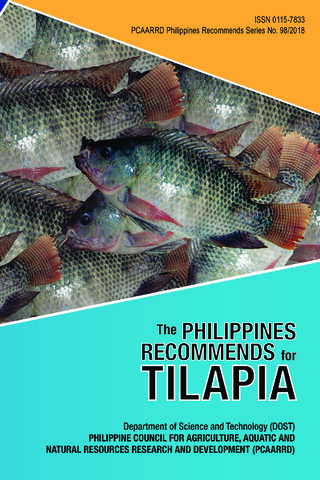Mangroves and brackishwater pond culture in the Philippines
| dc.contributor.author | Primavera, Jurgenne | |
| dc.date.accessioned | 2013-03-06T01:19:15Z | |
| dc.date.available | 2013-03-06T01:19:15Z | |
| dc.date.issued | 1995 | |
| dc.identifier.citation | Primavera, J. H. (1995). Mangroves and brackishwater pond culture in the Philippines. Hydrobiologia, 295(1-3), 303–309. | en |
| dc.identifier.issn | 0018-8158 | |
| dc.identifier.uri | http://hdl.handle.net/10862/1488 | |
| dc.description.abstract | Around 50% of mangrove loss in the Philippines can be traced to brackishwater pond construction. The decrease in mangroves from 450 000 ha in 1920 to 132 500 ha in 1990 has been accompanied by expansion of culture ponds to 223 000 ha in 1990. The history of fishpond development in the country includes a government-sponsored fishpond boom in the 1950-g and 1960s, the proconservation decade of the 1970s followed by a shrimp fever in the 1980s. Production from brackisshwater ponds has increased from 15 900 mt worth P7.6 million in 1938 to 267 000 mt valued at P6.5 billion in 1990. On the other hand, the maximum valuation of over $11 000 ha−1 yr−1 for unmanaged and managed mangrove forests makes them economically on par with the most profitable pond farming systems. The loss of mangrove systems and their varied goods and services is the single most important consequence of brackishwater pond culture in the Philippines. Moreover, intensive shrimp farming is associated with other ecological and socioeconomic effects such as pollution of coastal waters and decline in domestic food crops. New legislation and enforcement of existing laws, conservation of remaining mangroves, massive rehabilitation of denuded mangrove areas, and promotion of sustainable aquaculture and fisheries are recommended. | en |
| dc.language.iso | en | en |
| dc.publisher | Springer Verlag | en |
| dc.subject | Philippines | en |
| dc.title | Mangroves and brackishwater pond culture in the Philippines | en |
| dc.type | Article | en |
| dc.identifier.doi | 10.1007/BF00029137 | |
| dc.citation.volume | 295 | |
| dc.citation.issue | 1-3 | |
| dc.citation.spage | 303 | |
| dc.citation.epage | 310 | |
| dc.citation.journalTitle | Hydrobiologia | en |
| seafdecaqd.library.callnumber | VF SJ 0495 | |
| seafdecaqd.databank.controlnumber | 1995-34 | |
| dc.subject.asfa | aquaculture | en |
| dc.subject.asfa | aquaculture development | en |
| dc.subject.asfa | brackish water | en |
| dc.subject.asfa | brackishwater aquaculture | en |
| dc.subject.asfa | construction | en |
| dc.subject.asfa | environmental factors | en |
| dc.subject.asfa | fish culture | en |
| dc.subject.asfa | mangrove swamps | en |
| dc.subject.asfa | pond culture | en |
| dc.subject.asfa | ponds | en |
| dc.subject.asfa | shrimp culture | en |
Files in this item
| Files | ขนาด | รูป | View |
|---|---|---|---|
|
There are no files associated with this item. |
|||
รายการนี้ปรากฏใน (s)
-
Journal Articles [1258]
These papers were contributed by Department staff to various national and international journals.



